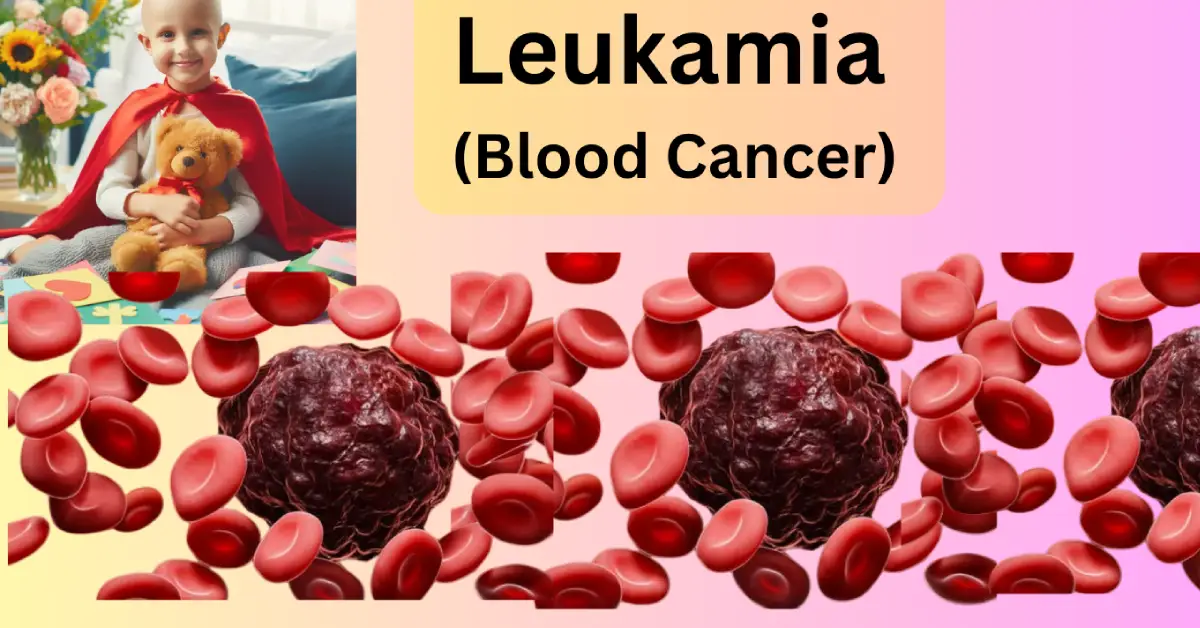Leukemia
Leukemia, a term that often evokes fear and uncertainty, is a complex and multifaceted disease. If you’ve ever asked yourself, “What is it?” or searched for detailed information on its symptoms, causes, and treatments, you’re in the right place.
Contents
What is Leukemia?
It is a type of Cancer that impacts the blood and bone marrow. Unlike other cancers that form solid tumors, itleads to the excessive production of abnormal white blood cells. These abnormal cells crowd out the normal blood cells, hindering the body’s capacity to fight infections, transport oxygen, and regulate bleeding..
Understanding Leukemia
Understanding leukemia is crucial for early detection and treatment. With advancements in medical research, early diagnosis and intervention can significantly improve outcomes and quality of life for those affected by this disease.
Types of Leukemia
Acute Lymphoblastic Leukemia (ALL)
ALL is the most common type of leukemia in children but can also occur in adults. It progresses rapidly and requires immediate treatment.
Acute Myeloid-Leukemia (AML)
AML is more common in adults and involves the rapid growth of myeloid cells. It’s known for its aggressive nature, necessitating swift medical attention.
Chronic Lymphocytic Leukemia (CLL)
CLL primarily affects older adults and progresses more slowly than acute forms. Patients may live with this type of leukemia for many years without symptoms.
Chronic Myeloid Leukemia (CML)
Chronic Myeloid Leukemia (CML) is identified by the presence of the Philadelphia chromosome, a genetic anomaly pivotal in its development. This form of leukemia advances gradually and is frequently controllable through targeted therapies.
Causes of Leukemia
Genetic Factors
Certain genetic mutations and inherited conditions can increase the risk of developing leukemia. For instance, Down syndrome is associated with a higher risk of certain types.
Environmental Factors
Exposure to high levels of radiation, certain chemicals (like benzene), and previous chemotherapy treatments are known risk factors.
Other Risk Factors
Other factors include smoking, a family history of leukemia, and certain viral infections such as the human T-cell leukemia virus (HTLV-1).
Symptoms
General Symptoms
It’s symptoms can be vague and easily mistaken for other illnesses. Common symptoms include:
- Fatigue
- Frequent infections
- Unexplained weight loss
- Swollen lymph nodes
- Easy bruising and bleeding
Acute Myeloid Symptoms
AML may present with specific symptoms like:
- Bone pain
- Pale skin
- Shortness of breath
- Frequent nosebleeds
Chronic Symptoms
Chronic leukemias often have fewer symptoms initially, but over time, patients might experience:
- Night sweats
- Fever
- Loss of appetite
- Swelling in the abdomen due to an enlarged spleen or liver
Diagnosing

Blood Tests
To diagnosis of Leukamia, required a complete blood count (CBC) can reveal abnormal levels of white blood cells, red blood cells, and platelets, hinting at leukemia.
Bone Marrow Tests
A bone marrow test, used to diagnose and monitor blood and bone marrow diseases like leukemia and anemia,
This test involves two main types: aspiration and biopsy.
Preparation includes informing the doctor about medications and allergies, and local anesthesia or sedation may be used. The procedure, typically performed on the hip bone, takes about 10–20 minutes.
Aftercare involves keeping the site clean and avoiding strenuous activity for 24 hours. Risks include bleeding, infection, and bruising. Results, available within a few days to a week, are analyzed to guide diagnosis and treatment. Follow-up with a doctor is necessary to discuss the results and any further steps.
Imaging Tests
CT scans, MRIs, and X-rays help assess the extent of the disease and detect complications in other parts of the body.
Leukemia Rash
What is Leukemia Rash?
Leukemia rash refers to various skin manifestations that occur due to the disease. These can include petechiae (small red or purple spots caused by bleeding under the skin) and purpura (larger areas of bleeding).
Identifying Leukemia Rash
Leukemia rashes are often mistaken for other skin conditions. They usually appear on the lower extremities and may not blanch (turn white) when pressed.
Treatment for Leukemia Rash
Treatment focuses on managing the underlying leukemia. Specific treatments for the rash itself might include corticosteroids or other medications to reduce inflammation and bleeding.
Treatment Options for
Chemotherapy
Chemotherapy uses powerful drugs to kill leukemia cells. It’s often the first line of treatment for many types of leukemia Cancer.
Radiation Therapy
Radiation therapy employs high-energy radiation to pinpoint and eradicate cancer cells. This treatment approach is commonly combined with other therapies for comprehensive management.
Targeted Therapy
Targeted therapy drugs attack specific abnormalities in cancer cells, such as the Philadelphia chromosome in CML.
Stem Cell Transplant
A stem cell transplant involves replacing diseased bone marrow with healthy stem cells from a Donor. This procedure offers a potential cure for certain patients, particularly those facing high-risk or recurring leukemia.
Living with Leukemia
Managing Symptoms
Living with leukemia involves managing both the disease and treatment side effects. This might include medications for pain, nausea, and infections.
Diet and Nutrition
A balanced diet plays a crucial role in preserving strength and energy levels. It’s vital for patients to prioritize nutrient-dense foods and ensure adequate hydration to support their overall health and well-being.
Exercise and Physical Activity
Engaging in regular, gentle exercise contributes to maintaining physical health and enhancing mood. Activities such as walking, yoga, and stretching are particularly beneficial for individuals managing leukemia.
Advances in Leukemia Research
New Treatment Approaches
Researchers are constantly developing new therapies, such as immunotherapy, which harnesses the body’s immune system to fight cancer.
Clinical Trials
Clinical trials provide access to cutting-edge treatments and contribute to medical advancements. Patients should discuss potential participation with their healthcare providers.
Genetic Research
Genetic research aims to understand the mutations that drive leukemia, leading to more effective and personalized treatments.
Support for Patients
Support Groups
Support groups offer emotional and practical support, connecting patients and families with others who understand their experiences.
Counseling and Mental Health
Professional counseling can help patients cope with the emotional challenges of a leukemia diagnosis and treatment.
Financial Assistance
Various organizations provide financial assistance for medical bills, travel, and other expenses related to leukemia treatment.
Preventing Leukemia
Can Leukemia Be Prevented?
While there is no sure way to prevent leukemia, reducing exposure to risk factors can lower the risk.
Healthy Lifestyle Choices
Not smoking, eating a healthy diet, exercising regularly, and avoiding exposure to harmful chemicals can all contribute to lowering the risk.
Regular Medical Check-ups
Regular check-ups can help detect early signs of leukemia, improving the chances of successful treatment.
Conclusion
Understanding leukemia, its symptoms, and treatment options is vital for early detection and effective management. Advances in research continue to improve the outlook for those diagnosed with this disease. Remember, early intervention can make a significant difference, so stay informed and proactive about your health.
FAQs
What are the early signs of leukemia?
Early signs include fatigue, frequent infections, unexplained weight loss, and easy bruising or bleeding.
Is leukemia hereditary?
Some types of leukemia can be influenced by genetic factors, but most are not directly inherited.
How is leukemia different from other cancers?
Leukemia affects the blood and bone marrow, whereas other cancers typically form solid tumors in organs or tissues.
Can leukemia be cured?
Some types of leukemia can be cured, particularly with early detection and appropriate treatment. Chronic types may be managed long-term.
What are the long-term effects of leukemia treatment?
Long-term effects can include fatigue, increased risk of infections, and potential impacts on organs, but many people live full and active lives after treatment.


Tremendous issues here. I am very glad to look your post.
Thank you so much and I’m having a look ahead to contact you.
Will you please drop me a mail?